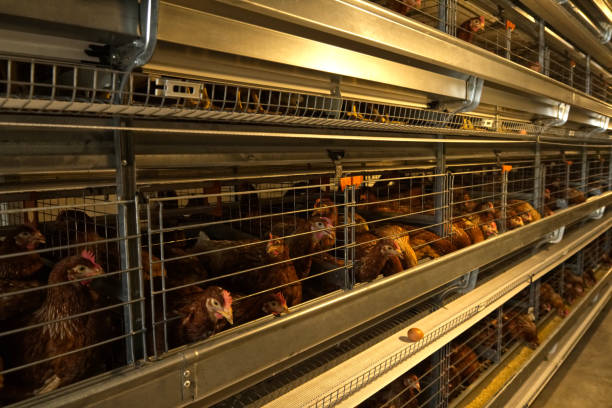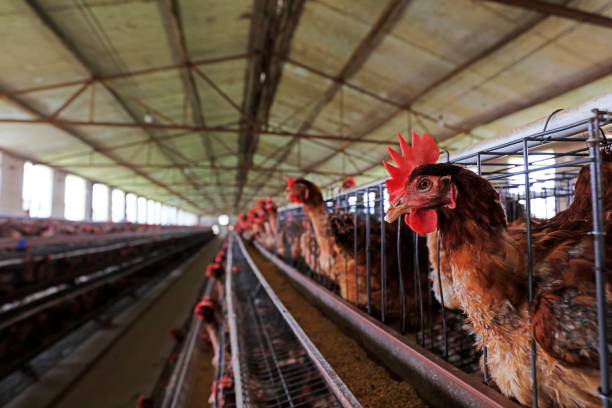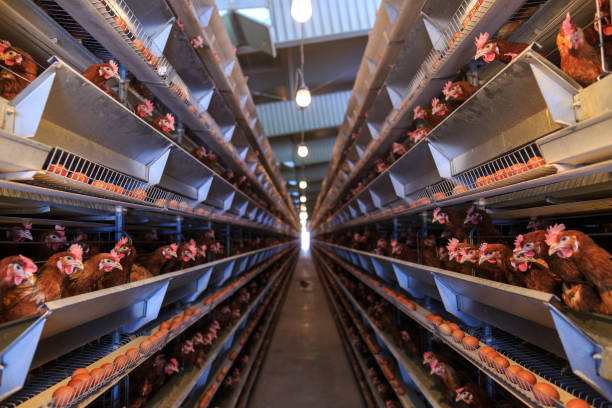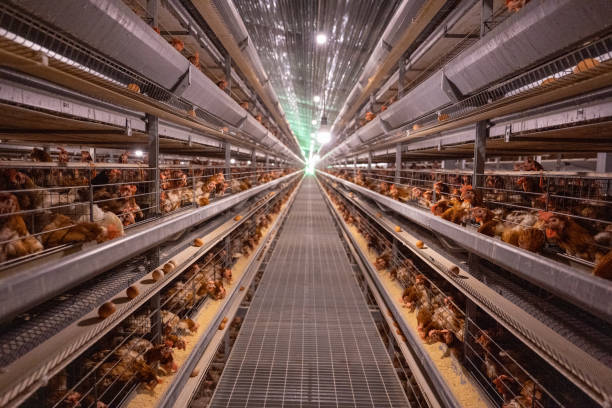
Optimizing Chicken Production in Kenya: Your Guide to Environmental Control Equipment
Optimizing Chicken Production in Kenya: Your Guide to Environmental Control Equipment
Kenya’s poultry industry is brimming with potential, but harnessing that potential requires more than just ambition. It demands a strategic approach, especially when it comes to managing the environment within your chicken houses. Environmental control equipment is no longer a luxury; it’s a necessity for maximizing productivity, minimizing losses, and ensuring the health and welfare of your flock. This guide will walk you through everything you need to know about optimizing your chicken production in Kenya using the right environmental control equipment.
**Why Environmental Control Matters in Kenya’s Climate**
Kenya boasts a diverse climate, ranging from hot and humid coastal regions to cooler highlands. These variations can significantly impact chicken health and productivity. Chickens are highly sensitive to temperature fluctuations, humidity levels, and air quality. Uncontrolled environments can lead to:
* **Reduced Growth Rates:** Extreme temperatures can stunt growth, delaying the time it takes for broilers to reach market weight or affecting the egg-laying capacity of hens.
* **Increased Disease Susceptibility:** Unstable environments weaken the immune system, making chickens more vulnerable to diseases like coccidiosis, respiratory infections, and fowl cholera.
* **Higher Mortality Rates:** Heat stress in particular can cause significant losses, especially during the hotter months.
* **Decreased Egg Production:** Temperature fluctuations affect the laying rate and egg quality of hens.
* **Poor Feed Conversion Ratio:** Chickens in stressful environments consume more feed but convert it less efficiently into meat or eggs, increasing production costs.
Environmental control equipment helps mitigate these risks by creating a stable, comfortable environment that optimizes chicken health and performance throughout the year.
**Key Environmental Control Equipment for Chicken Farms in Kenya**
Now, let’s dive into the specific types of equipment that can make a world of difference for your poultry operation:
* **Ventilation Systems:**
Ventilation is arguably the most critical aspect of environmental control. It removes excess heat, moisture, and harmful gases like ammonia, while providing fresh air for the chickens. There are several types of ventilation systems suitable for Kenyan chicken farms:
* **Natural Ventilation:** This relies on natural airflow through openings in the chicken house. While cost-effective, it’s less reliable in controlling the environment, especially during extreme weather. It’s best suited for smaller farms in areas with moderate climates. Design is key here. Ensure adequate roof overhang to prevent rain from entering, and consider adjustable curtains or shutters to control airflow during different times of the year.
* **Tunnel Ventilation:** This system uses exhaust fans at one end of the house to pull air through the length of the building. It’s highly effective at cooling the house, particularly in hot climates. Large fans are typically located at one end, creating a “tunnel” of air flow. Inlets on the opposite end allow fresh air to enter. This system is ideal for larger broiler farms aiming for optimal cooling.
* **Cross Ventilation:** This system uses fans on one side of the house to push air across the building, with outlets on the opposite side. It provides good air circulation and is suitable for a variety of climates. Fans are positioned on one sidewall, and openings are located on the opposite sidewall. Air is pulled across the width of the house, effectively removing heat and moisture.
* **Combination Ventilation:** This combines natural and mechanical ventilation to optimize airflow depending on the weather conditions. A controller senses the temperature and humidity levels and adjusts the ventilation system accordingly.
* **Variable Speed Fans:** These fans allow you to adjust the airflow rate based on the temperature and humidity levels. This helps save energy and maintain a consistent environment. Investing in energy-efficient fans can significantly reduce your electricity bills. Ensure the fans are properly maintained and cleaned regularly for optimal performance.
* **Cooling Systems:**
Kenya’s hot climate necessitates effective cooling systems to prevent heat stress and maintain optimal temperatures.

* **Evaporative Cooling Pads:** These pads use the principle of evaporative cooling to reduce air temperature. Water is trickled down the pads, and as air passes through, it cools down. This is a cost-effective and efficient cooling solution, particularly in drier regions of Kenya. Ensure the pads are properly sized for your chicken house and that the water supply is clean and reliable. Regular cleaning is essential to prevent algae growth and maintain cooling efficiency.
* **Fogging Systems:** These systems spray a fine mist of water into the air, which evaporates and cools the environment. They are effective but require a reliable water supply and careful management to prevent excessive humidity. Fogging systems are particularly effective in reducing heat stress during peak temperature periods. However, excessive use can lead to respiratory problems in chickens.
* **Sprinkler Systems:** These systems spray water directly onto the roof of the chicken house, which cools the building through evaporation. This is a simple and cost-effective solution, but it can increase humidity levels. Sprinklers are best suited for houses with good ventilation to prevent moisture buildup.
* **Heating Systems:**
While Kenya is generally warm, some regions experience cooler temperatures, especially at night. Supplemental heating may be necessary, particularly for young chicks.
* **Gas Heaters:** These provide a consistent and reliable source of heat. They are efficient but require a gas supply and proper ventilation to prevent carbon monoxide buildup. Regular maintenance is crucial to ensure safe and efficient operation.
* **Electric Heaters:** These are easy to install and operate, but they can be more expensive to run than gas heaters. Consider using radiant heaters, which directly warm the chickens without heating the entire house.
* **Infrared Heaters:** These heaters provide targeted heat to specific areas, such as brooding areas for chicks. They are energy-efficient and provide a comfortable environment for young birds.
* **Lighting Systems:**
Lighting plays a crucial role in chicken growth, egg production, and overall well-being.
* **LED Lighting:** LED lights are energy-efficient, long-lasting, and provide consistent illumination. They are the preferred choice for modern chicken farms. Consider using dimmable LED lights to simulate natural daylight patterns.
* **Lighting Programs:** Implementing specific lighting programs can optimize egg production in laying hens. These programs typically involve specific periods of light and darkness to stimulate hormone production.
* **Control Systems:**
Modern control systems automate environmental control, making it easier to manage the chicken house environment.
* **Temperature Controllers:** These controllers monitor the temperature and automatically adjust the ventilation, cooling, and heating systems to maintain a consistent environment.
* **Humidity Controllers:** These controllers monitor the humidity levels and adjust the ventilation system to prevent excessive moisture buildup.
* **Automated Ventilation Controllers:** These controllers automatically adjust the ventilation system based on temperature, humidity, and ammonia levels.
* **Alarm Systems**
Alarm systems provide peace of mind and allow you to quickly respond to any critical changes in the chicken house environment.
* **Temperature Alarms**: These alarms alert you if the temperature exceeds or falls below preset levels.
* **Power Failure Alarms**: These alarms notify you of any power outages, allowing you to take preventative measures to protect your flock.
* **Water Leak Alarms**: These alarms detect any water leaks in the cooling or drinking systems, preventing water wastage and potential health problems.
**Choosing the Right Equipment for Your Farm**
Selecting the right environmental control equipment depends on several factors, including:
* **Climate:** Consider the specific climate of your region in Kenya, including temperature fluctuations, humidity levels, and rainfall patterns.
* **Farm Size:** The size of your chicken house will determine the capacity of the equipment needed.
* **Type of Production:** Broilers require different environmental conditions than laying hens.
* **Budget:** Establish a budget for environmental control equipment and prioritize the most essential items.
* **Energy Costs:** Consider the energy efficiency of the equipment and its impact on your operating costs.
**Installation and Maintenance**
Proper installation and maintenance are crucial for ensuring the long-term performance and reliability of your environmental control equipment.
* **Professional Installation:** Hire qualified technicians to install the equipment according to the manufacturer’s instructions.
* **Preventative Maintenance:** Implement a regular maintenance schedule to clean, inspect, and repair the equipment. This will help prevent breakdowns and extend its lifespan.
* **Trained Personnel:** Train your staff on how to operate and maintain the equipment.
* **Spare Parts:** Keep a stock of essential spare parts to minimize downtime in case of breakdowns.
**Integrating Environmental Control with Chicken Cages**
Chicken cages, whether for layers or broilers, play a significant role in optimizing space utilization and management. When combined with effective environmental control, the benefits are amplified.

* **Layer Cages:** Layer cages typically feature automated feeding, watering, and egg collection systems. Integrating these systems with environmental controls ensures that hens have consistent access to feed and water, while maintaining optimal temperature and humidity levels for egg production.
* **Broiler Cages:** Broiler cages are designed for efficient meat production. Combining them with environmental controls ensures that broilers grow quickly and efficiently, reaching market weight in a shorter period. Precise temperature control reduces stress and disease risk, improving overall flock health.
**Investing in Your Future**

Investing in environmental control equipment is an investment in the future of your chicken farm. By creating a stable, comfortable environment for your chickens, you can increase productivity, reduce losses, and improve the overall profitability of your operation. Don’t see it as an expense. Instead, view it as a strategic investment that will pay dividends in terms of increased efficiency, reduced mortality, and enhanced product quality. It’s about empowering your farm to thrive in Kenya’s dynamic environment. Start with a proper assessment of your farm’s needs and choose the right equipment to create an optimal environment for your flock. With careful planning and execution, you can unlock the full potential of your chicken production in Kenya.
